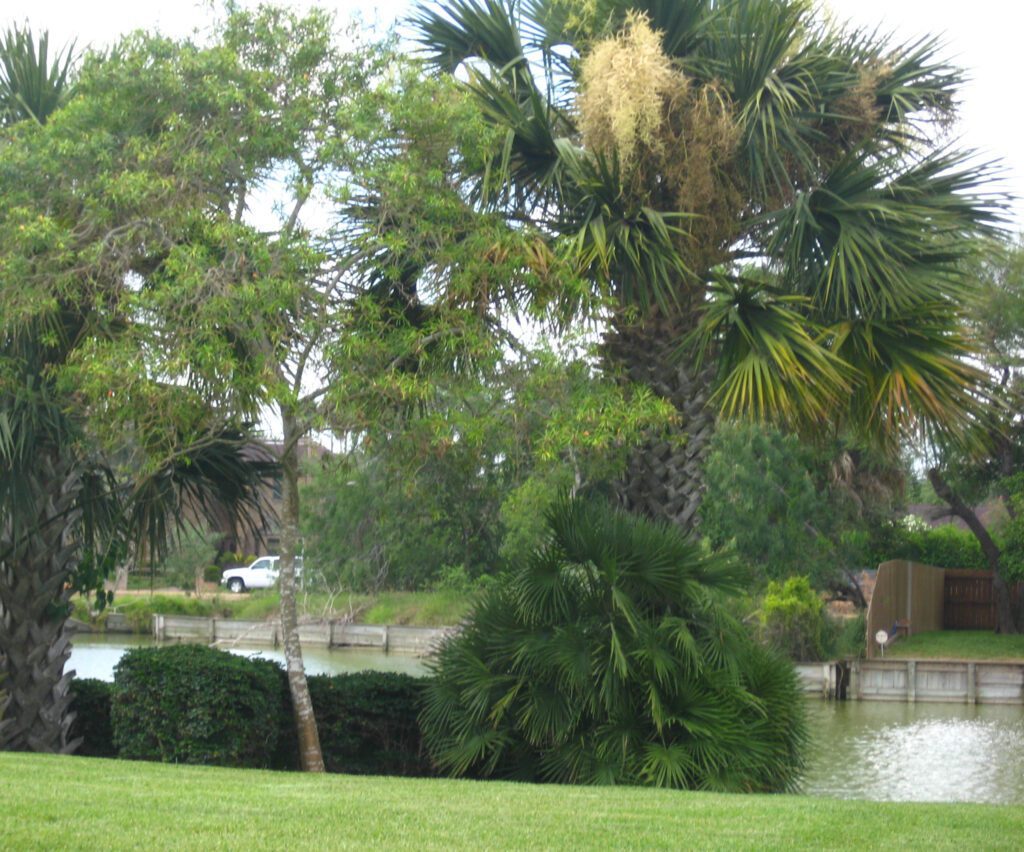
The striking size and generous canopy of Texas sabal palms make quite a statement. We grow them for the landscape industry and, as you can see from their size, you’re gonna want a professional installation. One that is 12 feet overall (6 feet clear trunk) will weigh over 1200 lbs. – just a bit more than your average homeowner can safely wrestle.
Growing Texas Sabal Palms
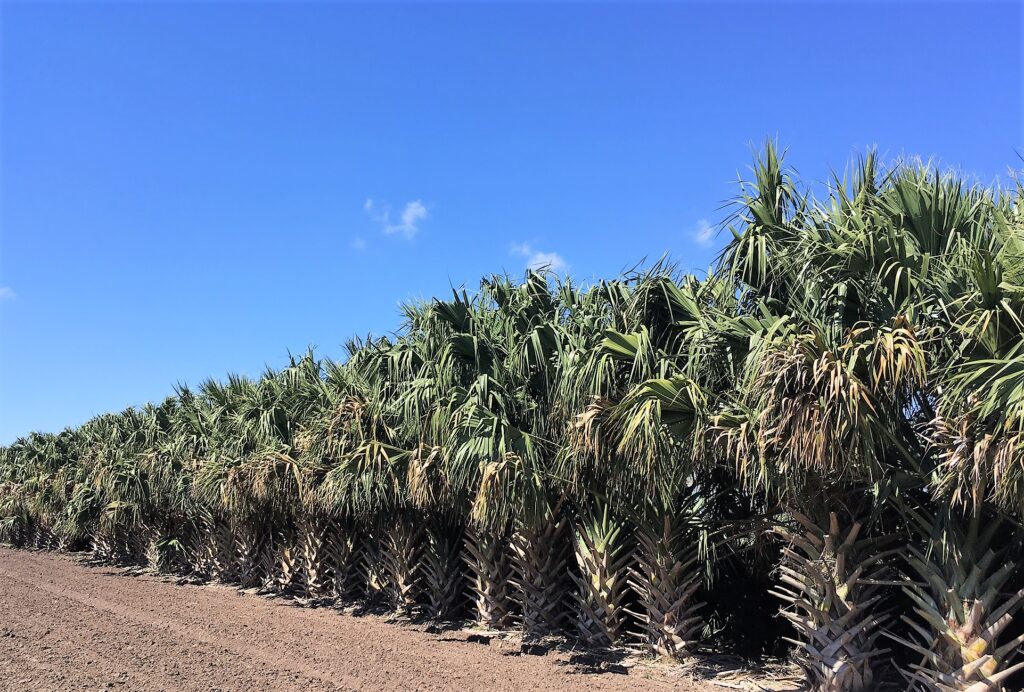
All of our Texas sabal palms are field grown. We give them generous spacing to encourage a thick trunk. Sabals are a slow growing palm. They put on one or maybe two sets of fronds each growing season. That equates to 18 inches of growth a year. The trees pictured above are 8-10 years old.

In the nursery industry, field grown palms are usually sold by trunk height. Trunk height is measured from the ground to the bottom of the most recent set of fronds to emerge.
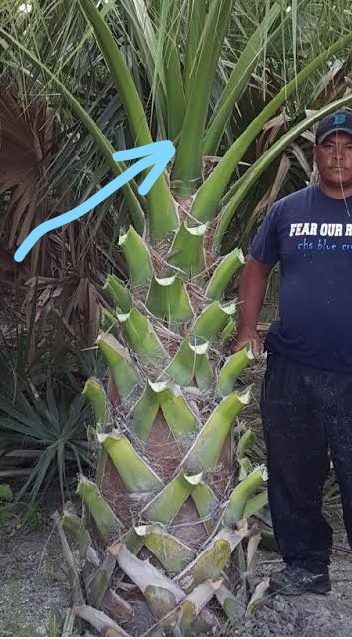
The base of that frond is where we measure
One of the distinctive characteristics of a Texas sabal is that they hold on to their boots. A palm boot is the base of the frond that is attached to the trunk.
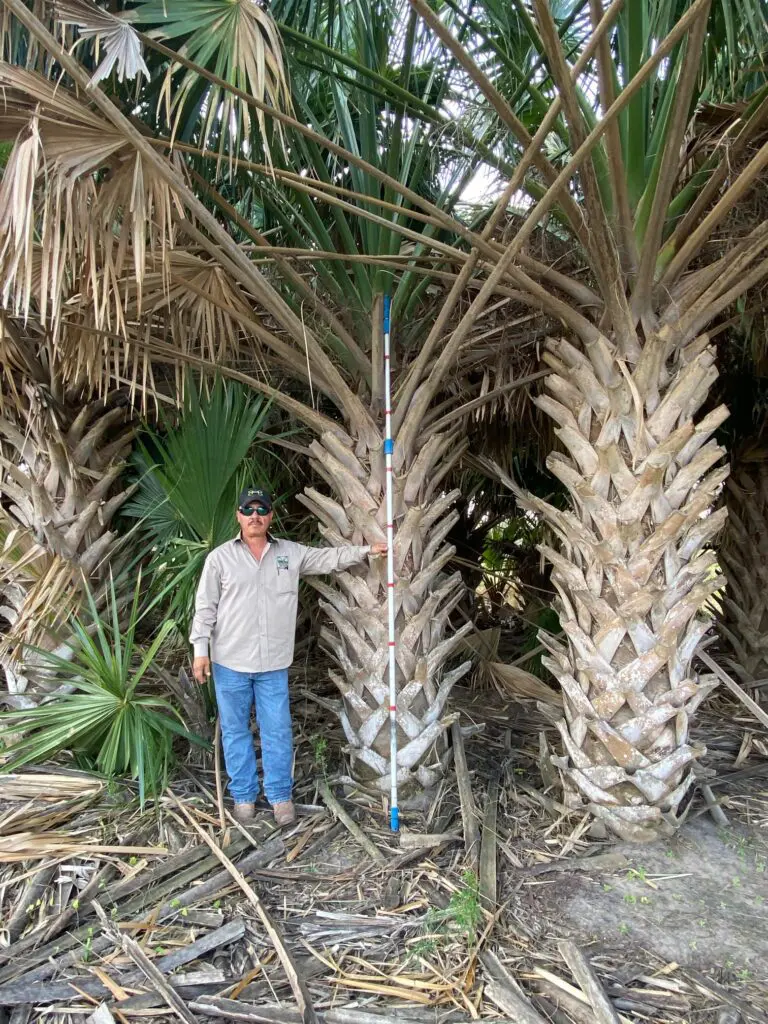
On a sabal palm, the boots make a crosshatch design. Whenever we trim a field of sabals, we leave plenty on the end of the boot. At harvest we’ll go back and give them a fresh, neat cut.
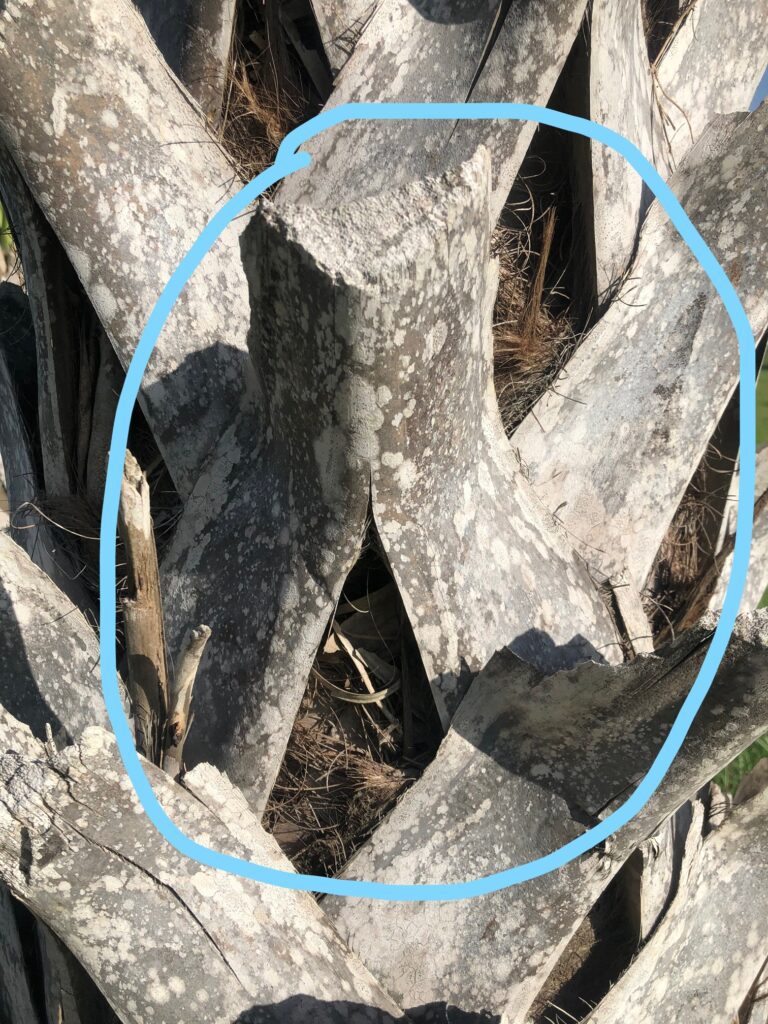
The circled area is the boot. You can see where the base attaches in two different places. Trim too close to the top of the opening and the boot splays open and doesn’t look as nice.
Harvesting Texas Sabal Palms
When it comes to digging and transplanting field grown palm trees, every variety reacts differently. Some you can practically rip from the ground and they’ll bounce right back. Texas sabals palms are harder than most. When you cut a sabal root, it dies. This means the tree needs to grow a full new set of roots and that takes a great deal of energy. Because of this, we remove the entire frond at harvest. Now the palm can focus all its energy on root growth.
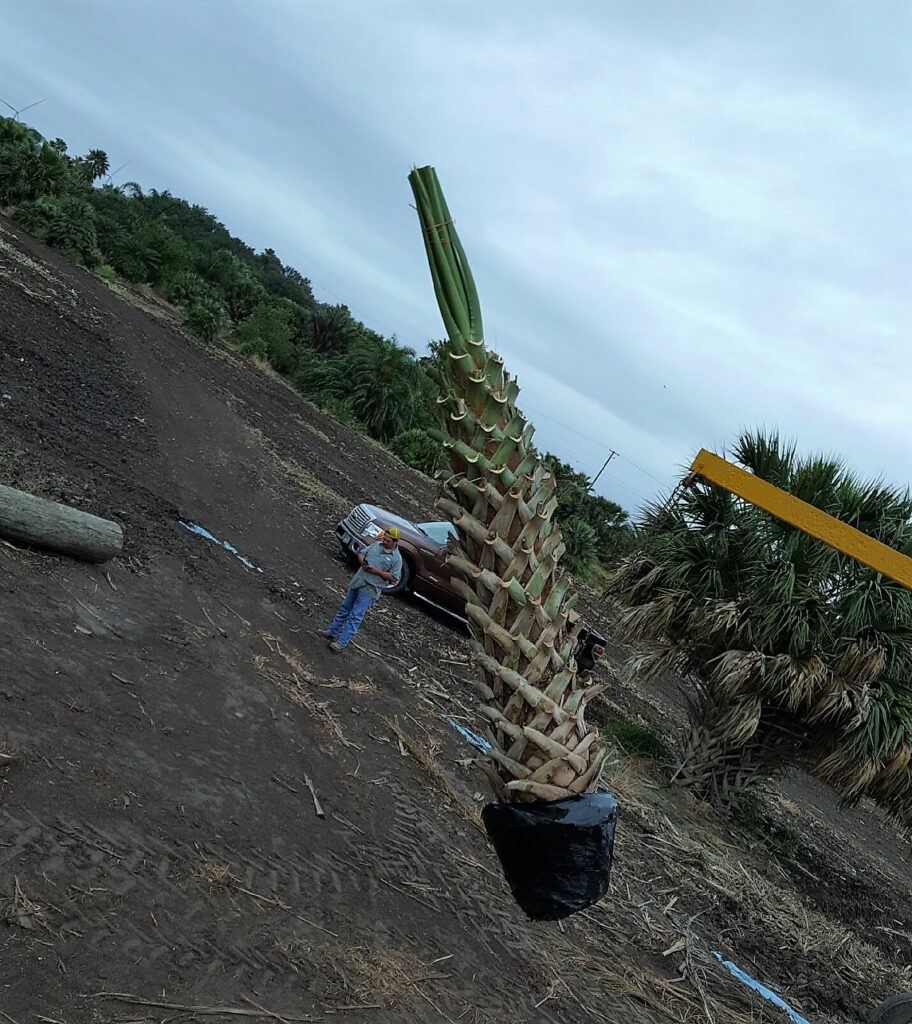
A second benefit of removing the frond is that there is less movement in the wind. A frond acts like a sail and moves the tree back and forth in the wind. Tip: If you want to sound like a plant pro, you may want to refer to the part of the plant that remains when you remove the frond as the petiole, instead of the stem.
Planting Texas Sabal Palms
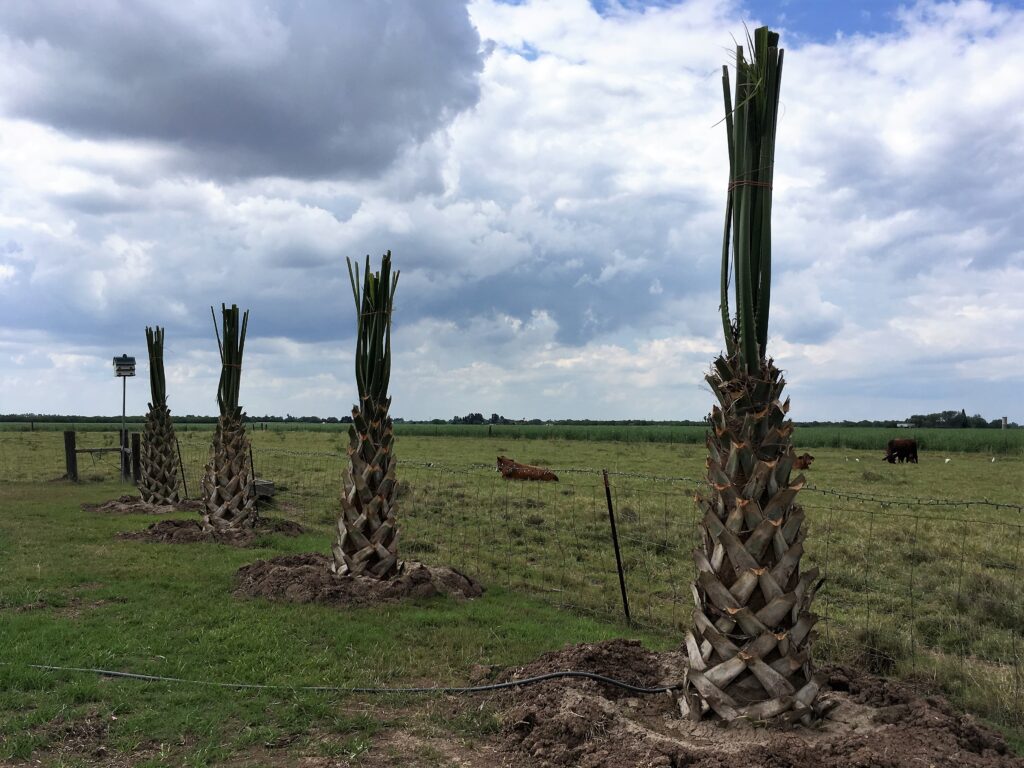
These are the sabals beside my pasture. They were planted in early summer which is ideal palm planting time. Palms are monocots, like grasses. They grow roots during warm weather. The petioles were tied up for a few weeks until we saw the new frond pushing up. After we removed the twine, the stiff petioles protected the tender new fronds from breaking in the wind.
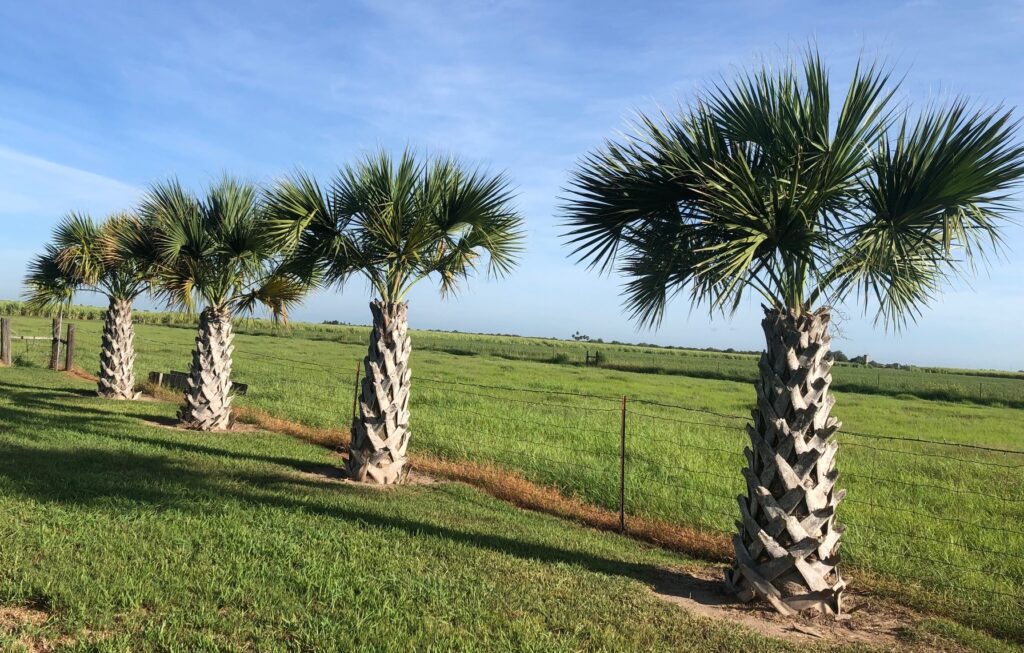
Here’s what our sabals look like today. It’s been 3 years since planting. I have to drag a hose over to water them, so they only get extra water every month or six weeks (at the most). Once sabals are established, they are very water-wise.
If you’re looking to add a splash of the tropics to your landscape project, consider including some Texas sabal palms. They are durable, water-wise, and gorgeous!
